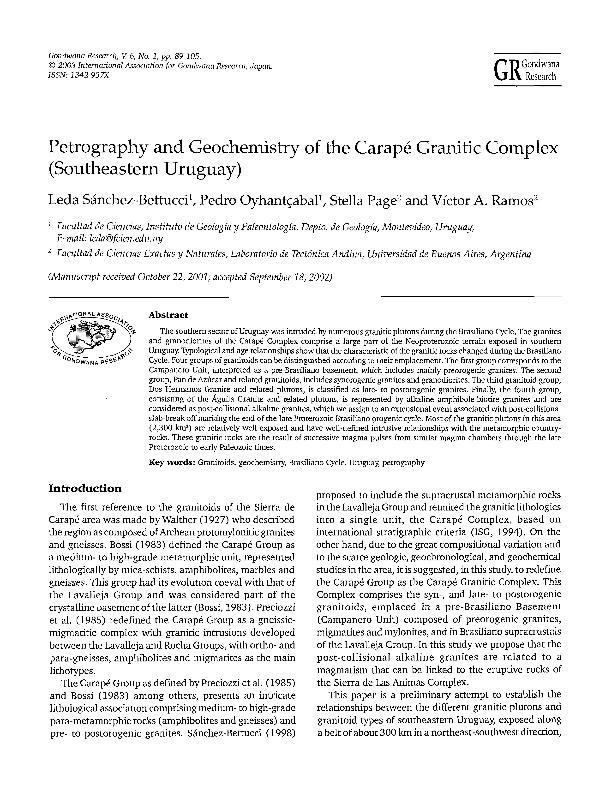Artículo
Petrography and geochemistry of the Carapé Granitic Complex (Southeastern Uruguay)
Fecha de publicación:
12/2004
Editorial:
Elsevier Science
Revista:
Gondwana Research
ISSN:
1342-937X
Idioma:
Inglés
Tipo de recurso:
Artículo publicado
Clasificación temática:
Resumen
The southern sector of Uruguay was intruded by numerous granitic plutons during the Brasiliano Cycle. The granites and granodiorites of the Carapé Complex comprise a large part of the Neoproterozoic terrain exposed in southern Uruguay. Typological and age relationships show that the characteristic of the granitic rocks changed during the Brasiliano Cycle. Four groups of granitoids can be distinguished according to their emplacement. The first group corresponds to the Campanero Unit, interpreted as a pre-Brasiliano basement, which includes mainly preorogenic granites. The second group, Pan de Azúcar and related granitoids, includes synorogenic granites and granodiorites. The third granitoid group, Dos Hermanos Granite and related plutons, is classified as late- to postorogenic granites. Finally, the fourth group, consisting of the Águila Granite and related plutons, is represented by alkaline amphibole-biotite granites and are considered as post-collisional alkaline granites, which we assign to an extensional event associated with post-collisional slab-break off marking the end of the late Proterozoic Brasiliano orogenic cycle. Most of the granitic plutons in this area (2,300 km2) are relatively well exposed and have well-defined intrusive relationships with the metamorphic country-rocks. These granitic rocks are the result of successive magma pulses from similar magma chambers through the late Proterozoic to early Paleozoic times.
Palabras clave:
Brasiliano Cycle
,
Geochemistry
,
Granitoids
,
Petrography
,
Uruguay
Archivos asociados
Licencia
Identificadores
Colecciones
Articulos(IGEBA)
Articulos de INSTITUTO DE GEOCIENCIAS BASICAS, APLICADAS Y AMBIENTALES DE BS. AS
Articulos de INSTITUTO DE GEOCIENCIAS BASICAS, APLICADAS Y AMBIENTALES DE BS. AS
Citación
Bettucci Sanchez, Leda; Oyhantçabal, Pedro; Page, Stella; Ramos, Victor Alberto; Petrography and geochemistry of the Carapé Granitic Complex (Southeastern Uruguay); Elsevier Science; Gondwana Research; 6; 1; 12-2004; 89-105
Compartir
Altmétricas




